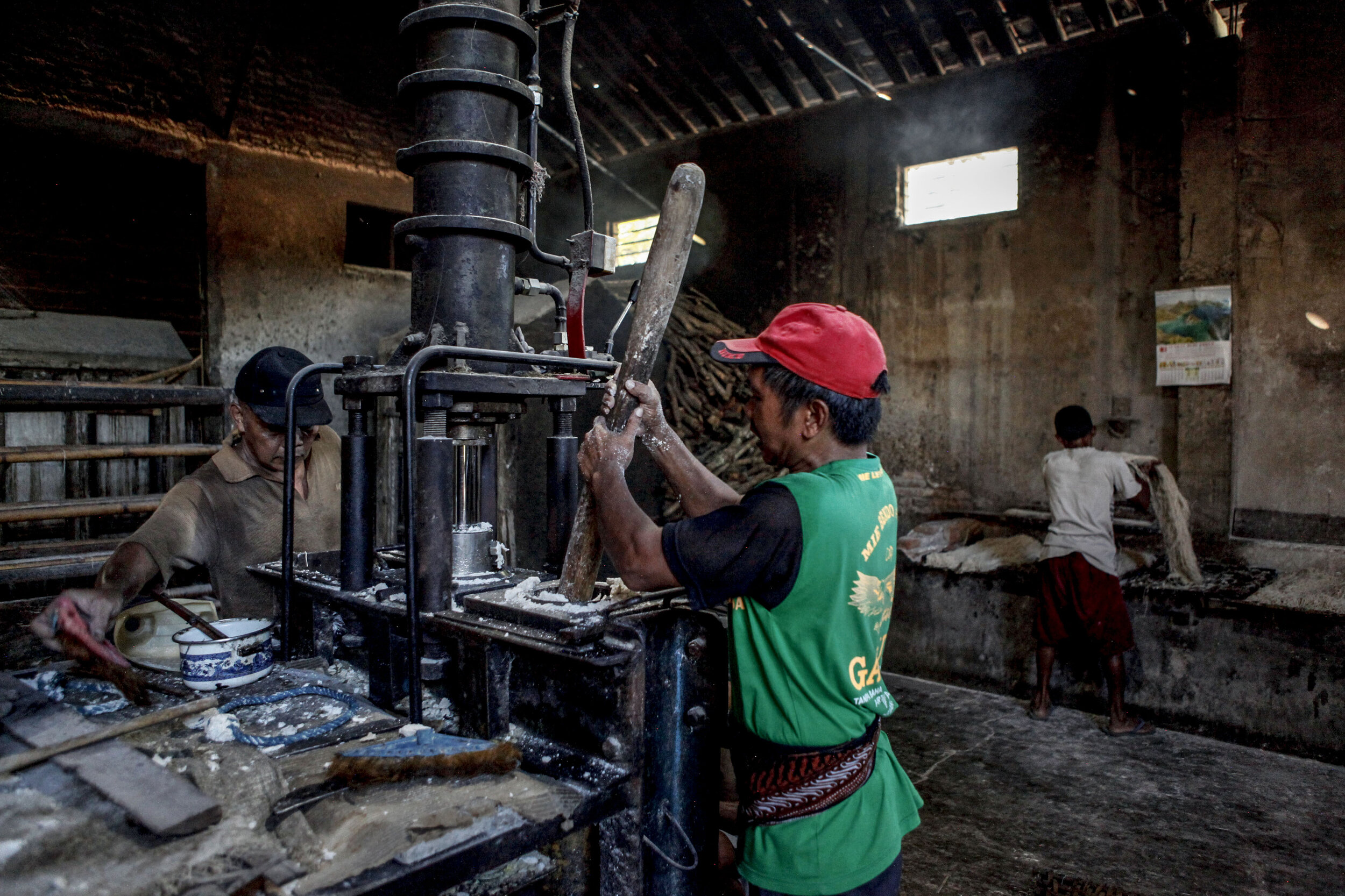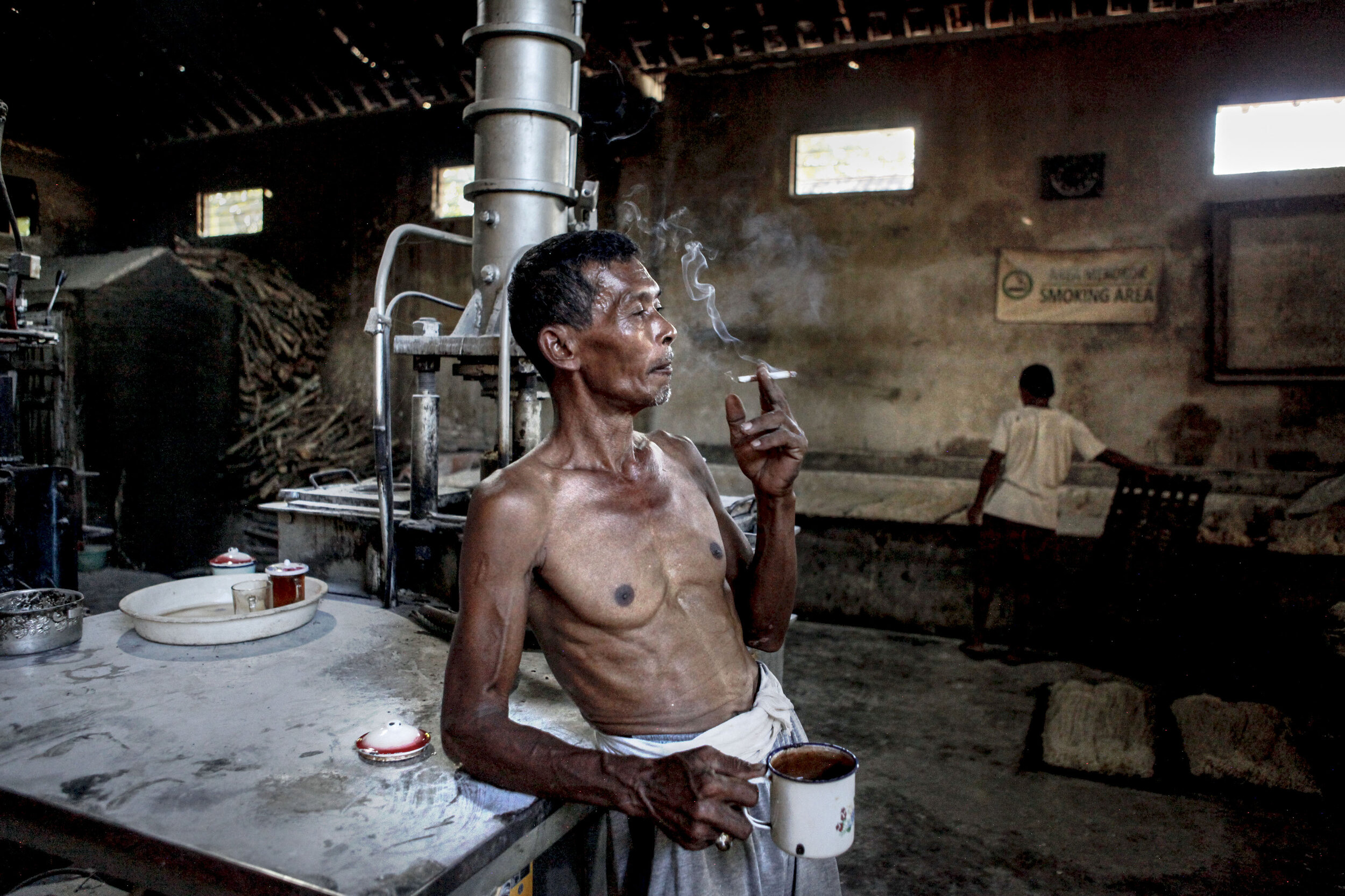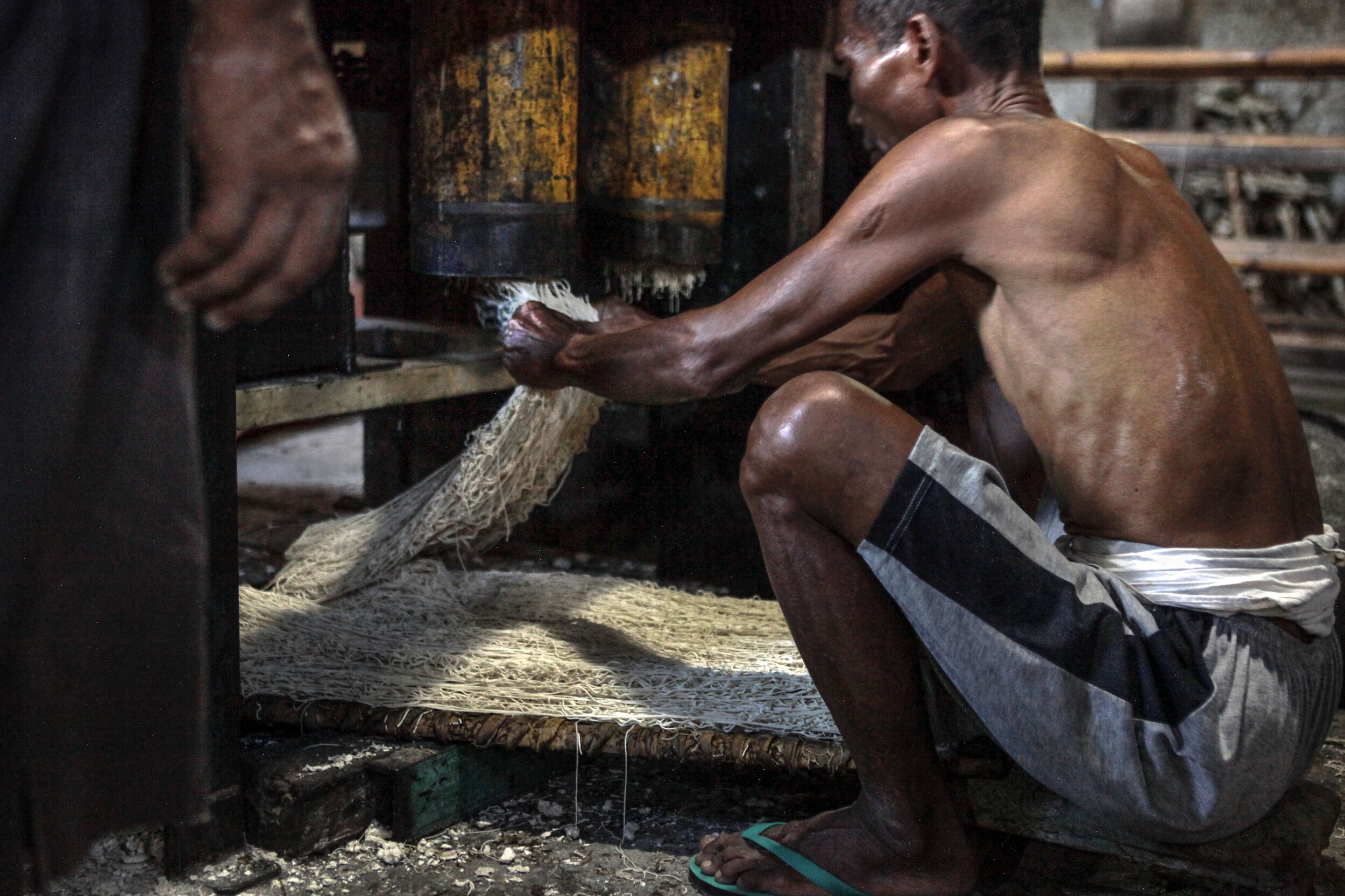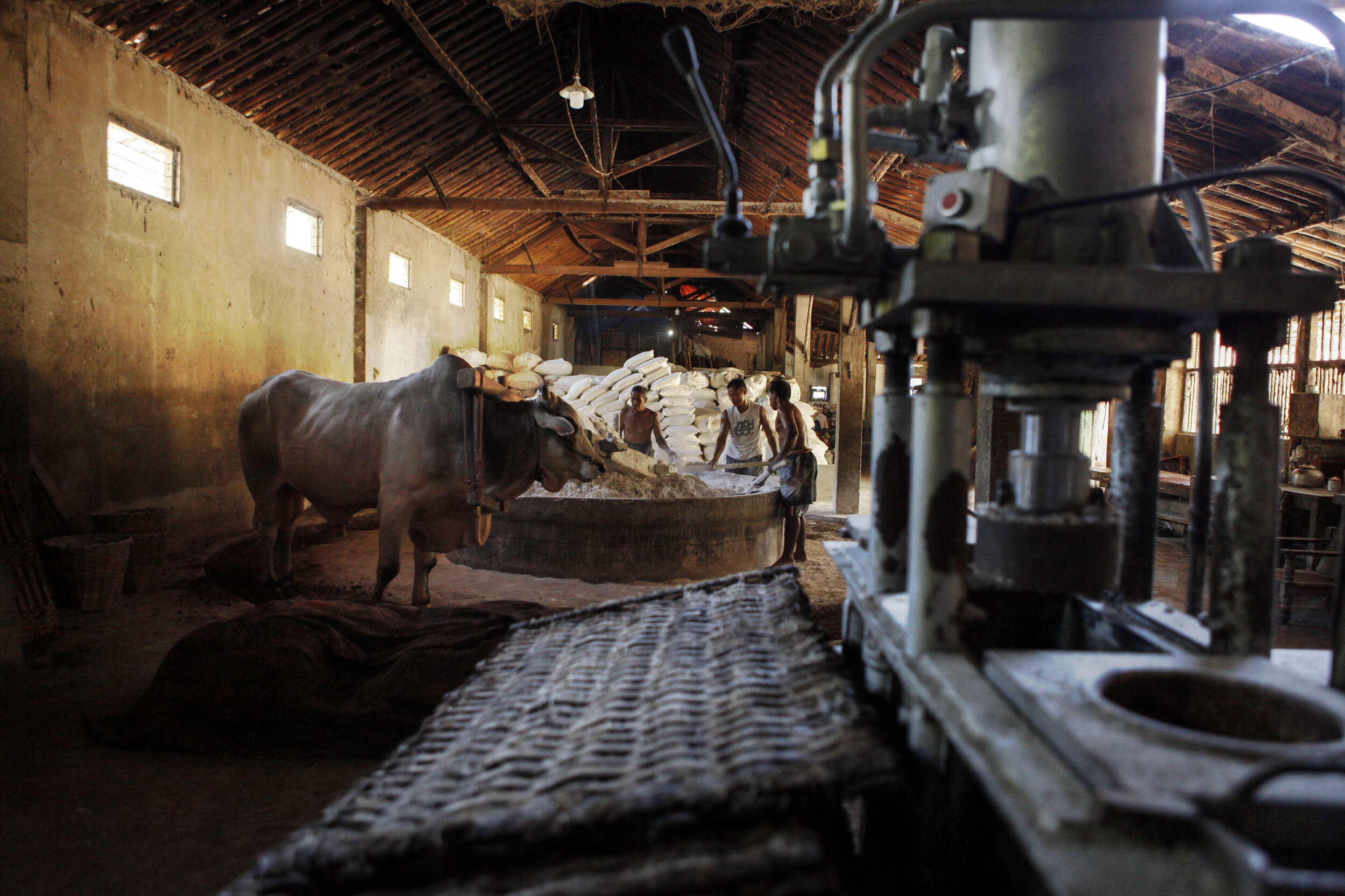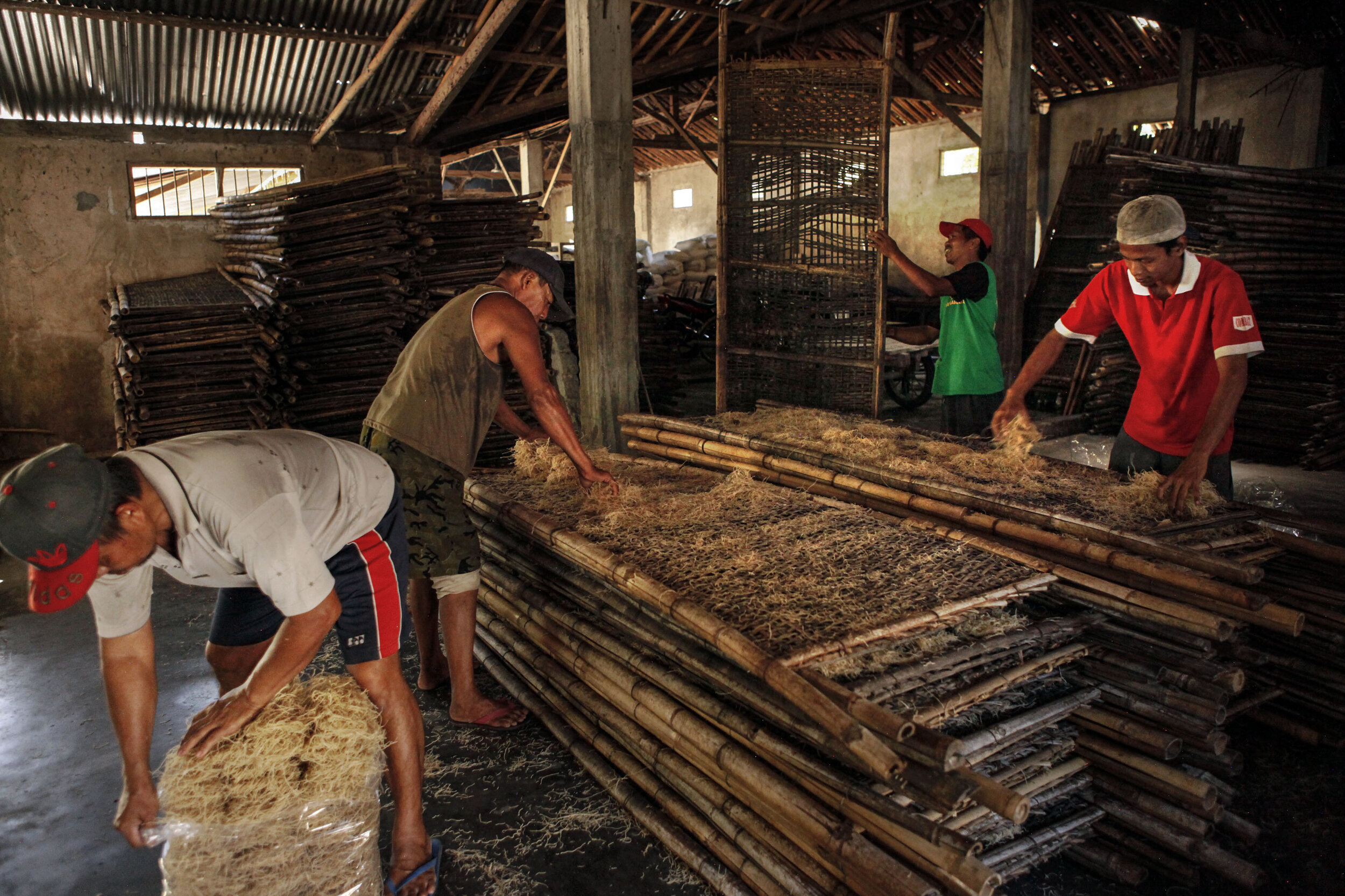
Ugly noodles, made with pride.
Java, Indonesia, March 2017
© Roni Bintang
The name means “ugly noodles,” but the care and labour that goes into keeping alive the tradition of “mie lethek” in Indonesia’s Java island is a thing of beauty. Mie Lethek Garuda, in Bendo village, Srandakan, is one of a few remaining noodle factories in an area that is famous for them, about 25 kilometres from the central Java city of Yogyakarta. And it is the last one where all traditional methods are used, including cow that rotates a one-tonne concrete cylinder to grind the tapioca flour.
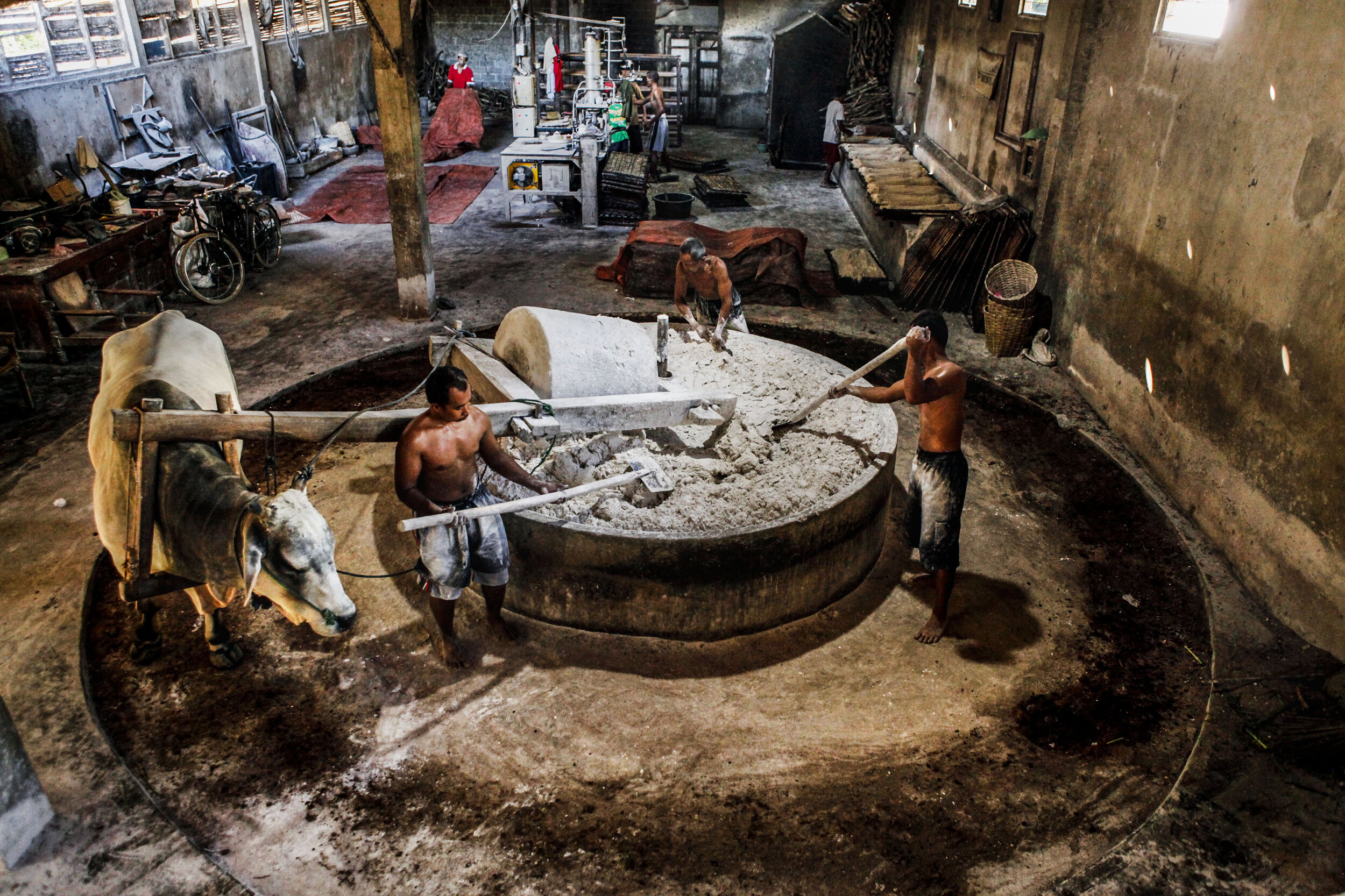

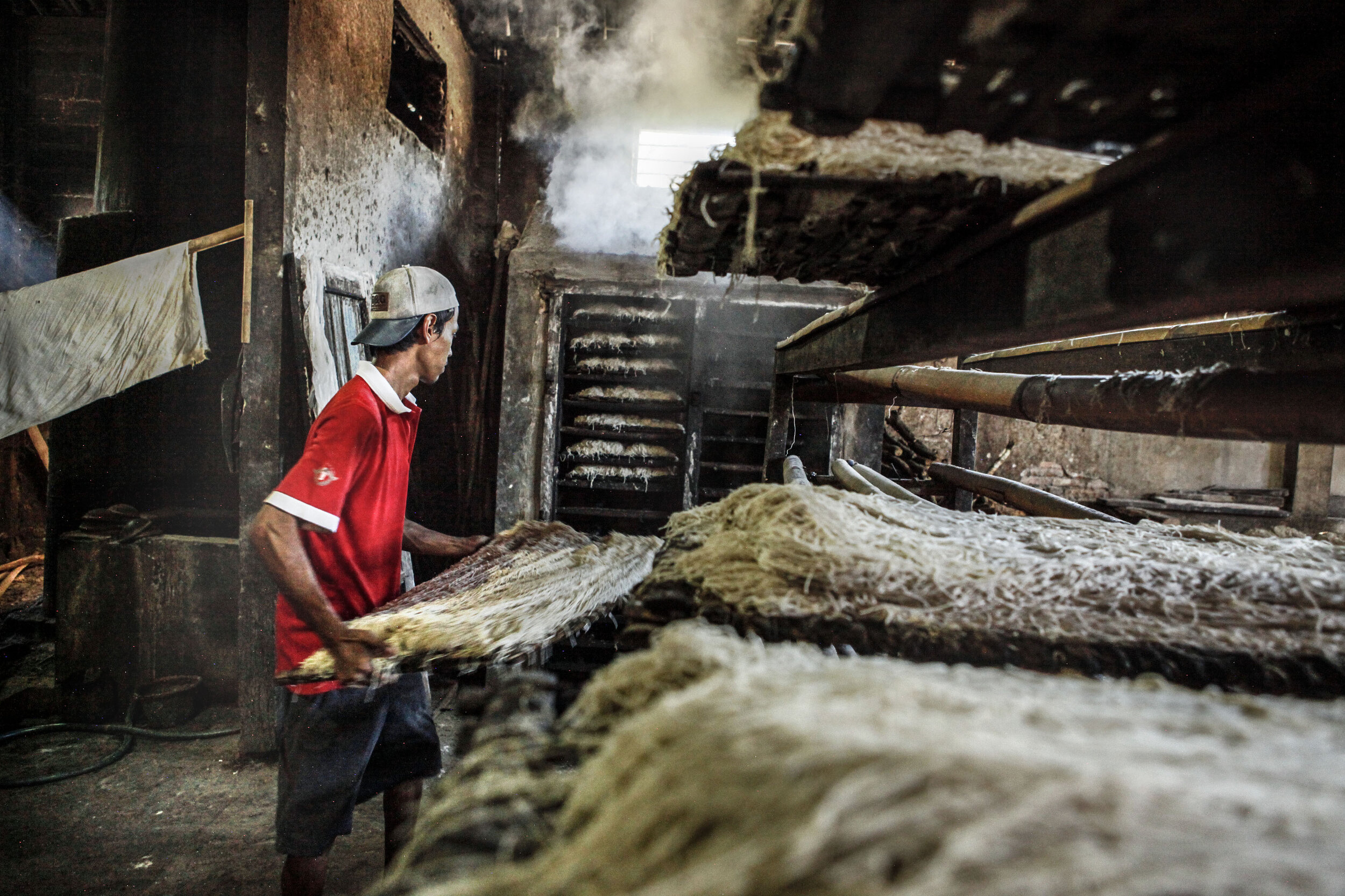
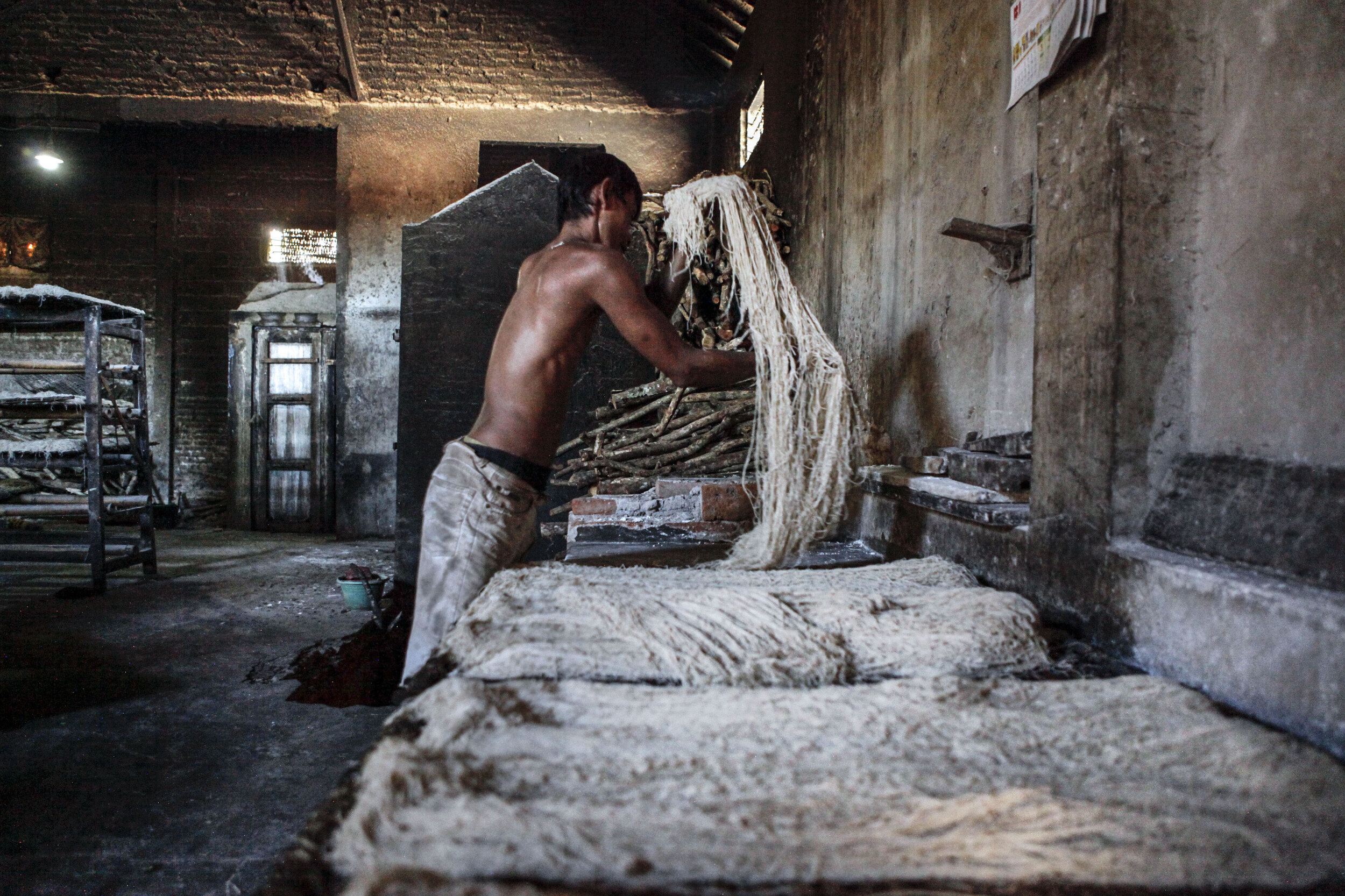
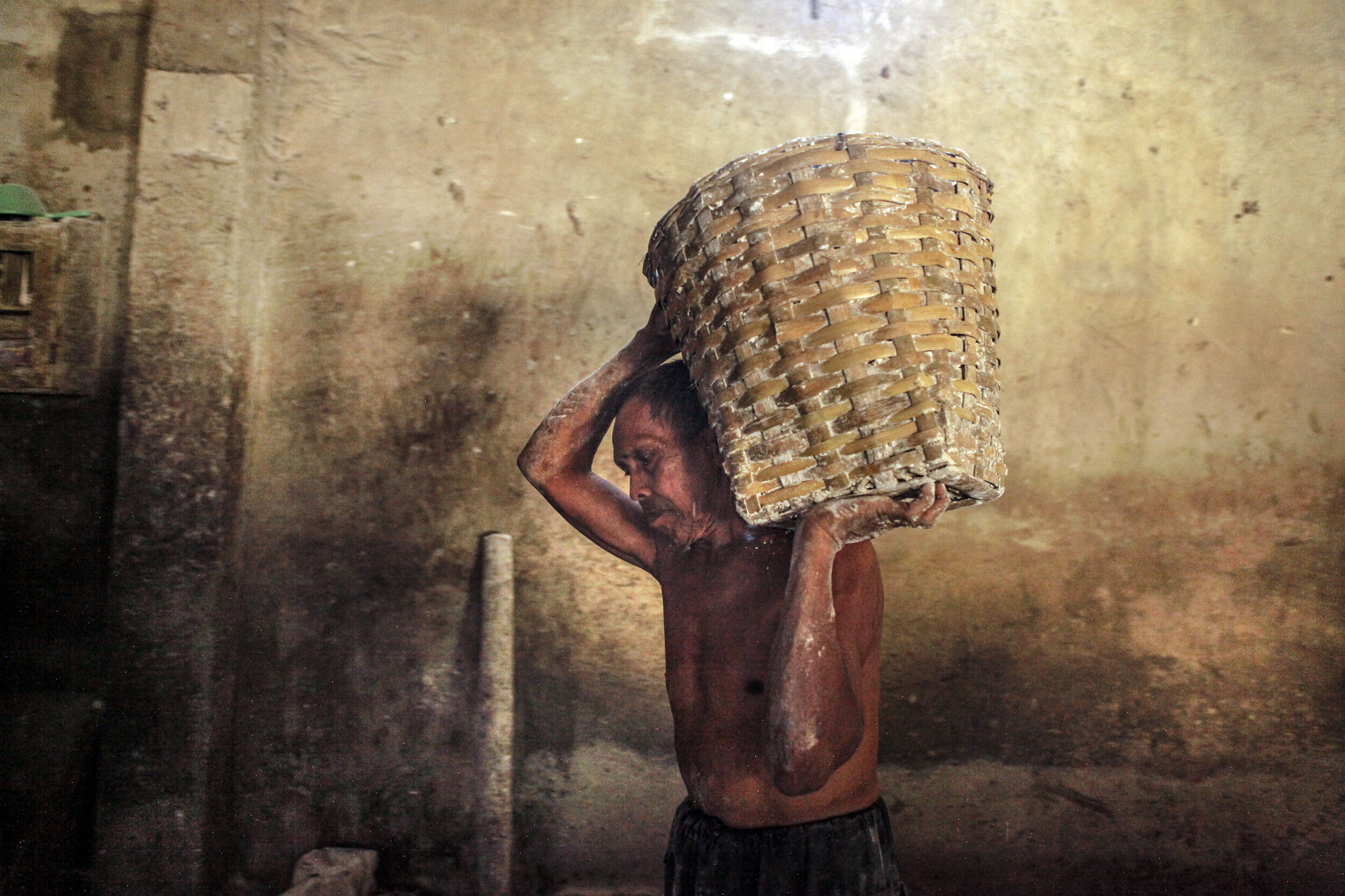
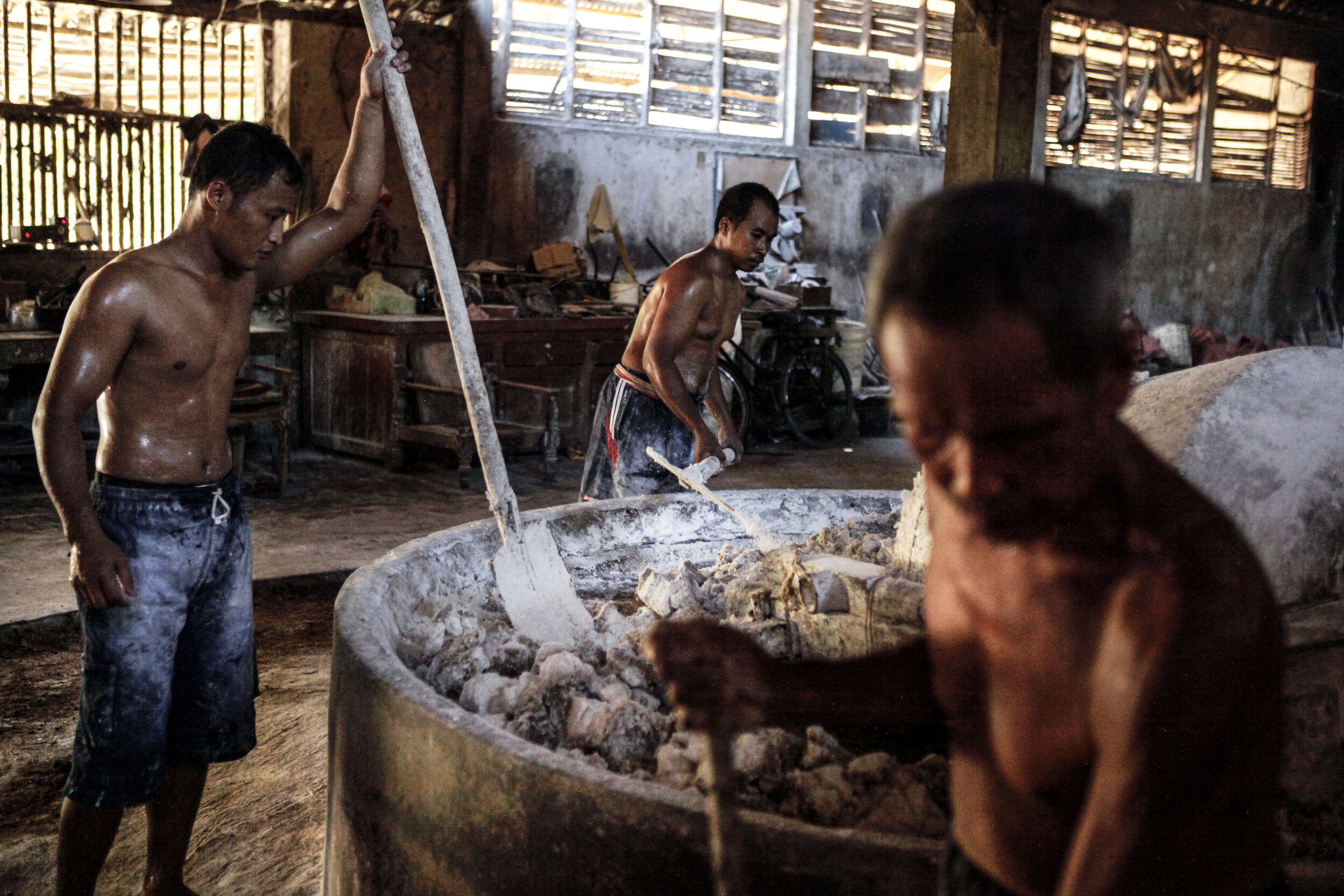

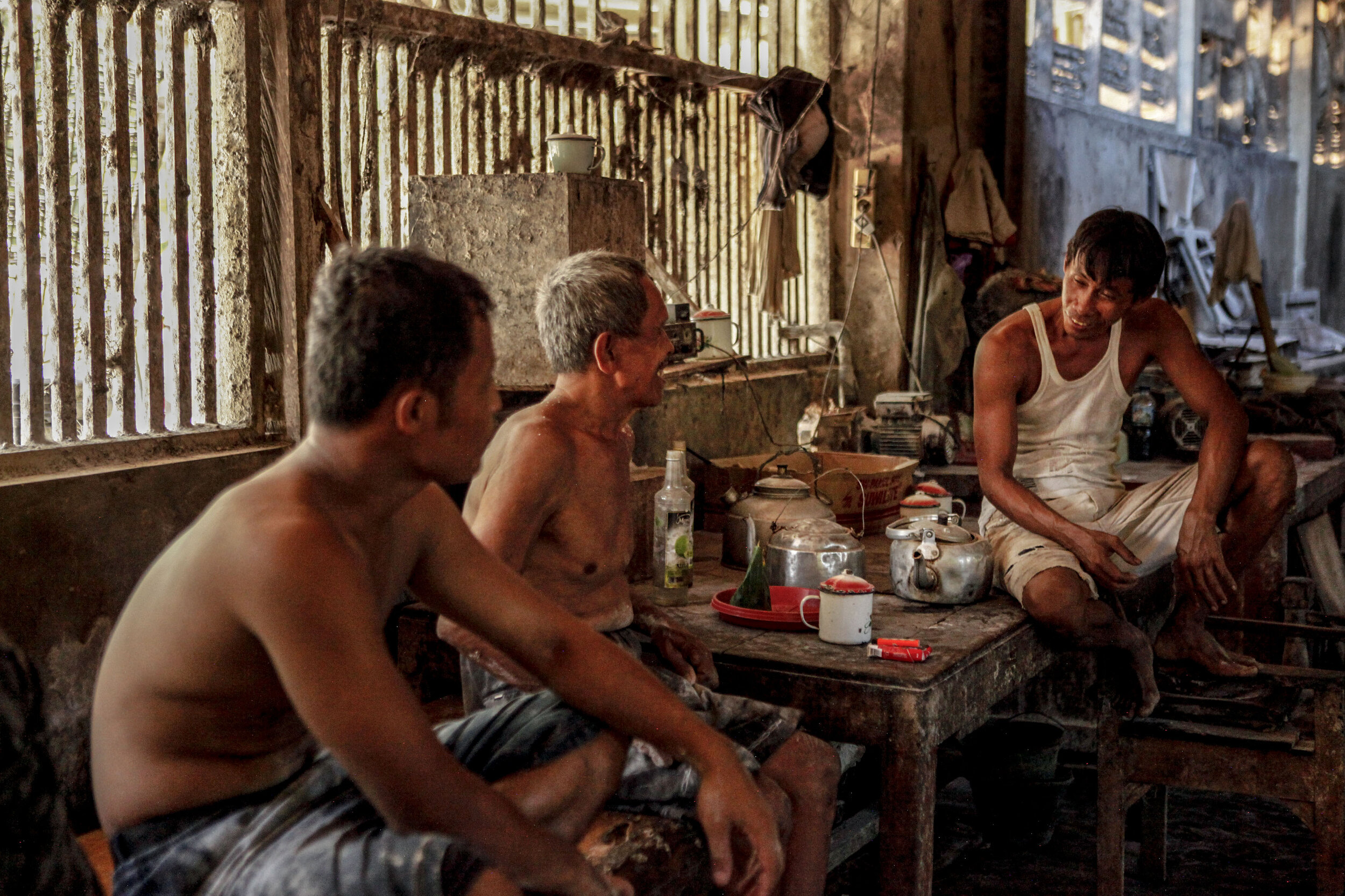
Yasir Feri carries on the business of his late grandfather, who set up production in the 1940s, in a dimly-lit warehouse about 3000 square metres in size. About 30 elderly workers pack hundreds of woven bamboo trays with noodles for drying in the factory yard. The noodles are sold for Rp 8,000 (80 AUD cents) per kilogram. Only 20,000 tonnes are produced every month, making them something “exclusive”.
The “uglyness” of the noodles refers to their gray and dirty appearance, which is due to the sap of the cassava they are made from. No additives or preservatives go into the noodles, giving them a shelf life of a year, and the slow, manual process to make them makes them special to the Yogyakarta restaurants and customers who buy them.
The noodles are usually served “goreng” (fried) or “rebus” (steamed) with chili and vegetables, and keep their handmade and grey appearance when cooked. Yasir and the other old men he works with won’t change a thing. They care less about profits, and more about keeping the taste of the noodles exactly how they remember from their childhood.
And their hard work is appreciated. Srandakan is now becoming a tourist destination for food enthusiasts, who understand that in an age of instant noodles and fast food, making an ugly noodle is really a beautiful art.
